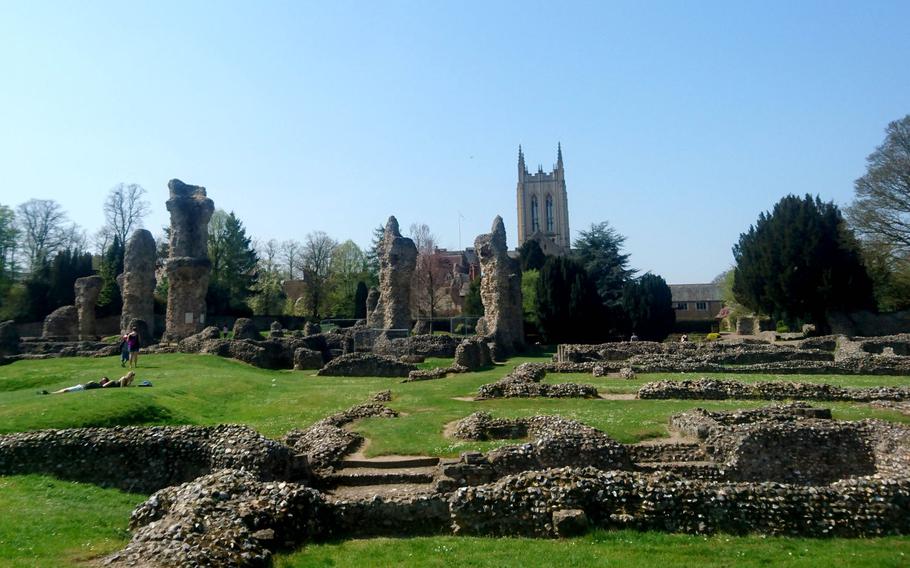
The ruins of an 11th-century Benedictine Abbey inside the Abbey Gardens in Bury St. Edmunds, England. The abbey was damaged by rioting townspeople in 1327 and stripped of its valuable building materials when it was surrendered to King Henry VIII in 1539, after his break with the Catholic Church. (William Howard/Stars and Stripes)
Country parks in England come alive in spring with beautifully arranged blossoming flowers, seas of wild daffodils and clear blue skies.
People emerge from their winter hibernation for peaceful strolls, picnics and lazy weekends in places like the Abbey Gardens, located in the heart of Bury St. Edmunds.
The Abbey Gardens was created in 1831 as a botanic garden mimicking the Royal Botanic Gardens in Brussels. Today, the central area is decorated with as many as 20,000 plants and bulbs rotated through seasonal arrangements.
There’s much else to see and experience in the 14-acre park: a rose garden, a children’s play area and tree house, a wildlife feeding area, a small aviary, an herb garden, a sensory garden for the blind, a bowling green and a tennis court.
Visitors can also explore the ruins of an 11th-century Benedictine Abbey damaged by townspeople in 1327 during a summer of riots. The structure was stripped of its valuable building materials when it was surrendered to King Henry VIII in 1539, after he broke from the Catholic Church.
The Great Gate at the main entrance to the park is the best-preserved feature, with stonework that’s survived since the 14th century.
For the past nine years the Abbey Gardens has earned the Green Flag Award Scheme, an international mark of quality for parks and green space.
howard.william@stripes.com Twitter @Howard_stripes
DIRECTIONS: Address: 34 Abbeygate St, Bury Saint Edmunds IP33 1LW, UK About a 30-minute drive from RAF Mildenhall via the A14 motorway with nearby paid parking at the Ram Meadows and Angel Hill car parks. TIMES: Opening times are 9 a.m. Sundays and 7:30 a.m. Mondays-Saturdays. Closing times vary, depending on daylight hours. Generally, gates close from November to February at 4:30 p.m., March to May at 6 p.m., 7:30 p.m. to 8 p.m. from June to September, and in October at 6 p.m. COSTS: Admission is free. FOOD: The Garden Cafe offers cold and hot drinks, snacks and ice cream. INFORMATION: Phone: (+44)(0)1284 757-490, email: parks@westsuffolk.gov.uk, website: westsuffolk.gov.uk/leisure/Parks/abbey-gardens.cfm